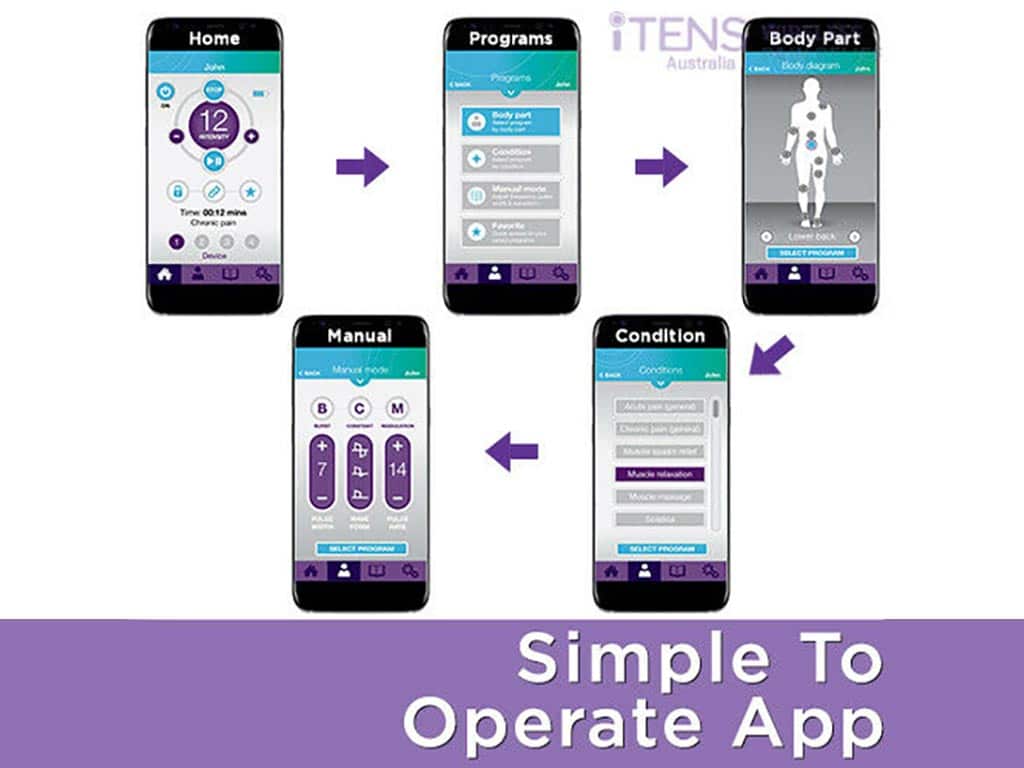
A Transcutaneous Electrical Nerve Stimulation or TENS unit for leg cramps can reduce discomfort effectively. It is an electrical device that delivers electrical current to the treatment area. Accordingly, it is an effective method of pain relief as the electrical stimulation can activate different mechanisms. Foremost, TENS leg pain therapy can block the transmission of pain signals to the brain. Also, the electrical pulses can prompt the release of endorphins and improve blood flow.
Leg cramp symptoms are a common issue that affects people of all ages. It may range from acute pain to severe cramps. There is a wide range of treatments available, like stretching, physical activity, and massaging the affected area. However, it may not always provide long-term relief. This has led to the popularity of TENS therapy as a cure for pain. The following sections will present TENS for leg cramps, including its benefits and how to use the device.
What Is a TENS Unit for Leg Cramps?
The TENS unit for leg cramps is a device that sends low-voltage currents to the body to alleviate leg pain conditions and tight muscles. It streams the electrical pulses through the electrode patches placed on the skin. Accordingly, pain clinics, medical professionals, and physical therapists often use TENS to help their patients manage leg pain. Also, individuals experiencing leg ailments may utilise a portable TENS unit at home.
TENS devices are available in both wired and wireless configurations. Wired TENS machines use cables to connect the unit to the electrodes. Hence, it provides a consistent flow of electric currents. On the other hand, wireless TENS offer greater flexibility and mobility since they do not require cables. Therefore, people can discreetly wear the compact wireless device and freely move around while receiving electrical stimulation.
Moreover, most TENS units come with adjustable settings. This allows users to modify the frequency, intensity, and duration of the electrical pulses. Many TENS also offer various pre-set programs to target different types of conditions, including leg cramps. Also, some TENS devices include rechargeable batteries for continued use without frequent battery replacements.
Causes of Leg Cramps
- Dehydration: not having enough fluids in the body can lead to electrolyte imbalances, which may contribute to muscle cramps.
- Muscle fatigue: overuse of muscles, especially during exercise, can lead to muscle fatigue and cramping.
- Mineral imbalance: deficiencies in minerals, such as potassium or calcium, can lead to the condition.
- Poor circulation: reduced blood flow to the legs can result in cramping.
- Nerve pain or compression: compression of nerves in the legs can cause muscle cramping.
- Medications: certain medications, such as statins, may increase the risk of muscle cramps.
- Underlying conditions: this may include knee pain, arthritis pain, and diabetes.

Benefits of Using TENS Units for Leg Cramps
TENS units for leg cramps present a range of benefits for people seeking pain relief. Firstly, it offers a non-invasive approach. It does not involve surgery or the insertion of needles. Hence, it makes it a comfortable and safe treatment option. Secondly, TENS provide drug-free pain relief. This reduces the reliance on medications that can have side effects or interactions with other drugs.
Thirdly, the customizability of the TENS device allows users to adjust the settings. This personalised approach enhances the effectiveness of the treatment. Also, it accommodates individual preferences and needs. Fourthly, the portable nature of TENS enables users to experience relief from leg pain anywhere. This convenience allows for consistent use of the device as needed.
Accordingly, TENS are cost-effective in the long run. It provides a reusable solution for addressing the condition. Therefore, it can lead to potential cost savings compared to ongoing medication expenses. Additionally, it offers targeted pain relief. By precisely positioning the electrode patches to the treatment area, it enhances the effectiveness of TENS therapy.
How Does It Work?
Foremost, the TENS device operates on the principle of the Pain Gate Theory. This suggests that the electrical pulses can interfere with and close the gates that allow pain signals to reach the brain. Moreover, the electrical stimulation prompts the release of endorphins. These are the natural painkillers of the body that promote a sense of well-being.
The TENS unit also influences blood circulation in the treatment area. Thus, the electrical currents can cause vasodilation, which is the widening of blood vessels. This leads to an increase in blood flow to the muscles and surrounding tissues. Hence, it further alleviates leg cramps.

How to Use a TENS Unit for Leg Cramps
Using a TENS unit for leg cramps involves several steps to ensure safe application. Before operating TENS, it is crucial to consult a health professional. This is particularly necessary for people with underlying medical conditions. Accordingly, to start, connect the electrodes to the central unit using lead cables or to a smartphone via Bluetooth for wireless.
Next, identify the treatment location, prepare it, and position the adhesive electrodes. It is essential to follow the electrode placement guide in this step. Once the electrodes are in place, the individual can turn on the TENS device. Then, the user can adjust the settings or choose a pre-set program that directly targets leg cramps. Begin with the lowest setting and moderately increase it to a comfortable level.
Throughout the session, the individual should pay attention to their comfort level and make adjustments as necessary. The duration of the TENS therapy may vary depending on specific recommendations. Generally, the session may last for 15 to 30 minutes. After the therapy session, the individual can turn off the device and carefully remove the electrodes from the skin.
Electrode Pad Placement Guide
Foremost, the individual should identify the specific area on the leg experiencing cramps. This may include the calf muscles, the back of the thigh, or any other region where the cramping is prominent. When placing the electrodes, it is essential to consider the muscle groups involved in the cramping. Furthermore, the user should apply the pads evenly on the treatment region.
Position the electrodes away from bony prominences, such as the knee joint. If using multiple electrodes, the individual should maintain an appropriate distance between them. This is to ensure that the electrical stimulation is evenly distributed.
Conclusion
The causes of leg cramps may include dehydration, muscle fatigue, poor circulation, and nerve compression. Fortunately, there is a TENS unit for leg cramps that is a highly effective solution. It is a wired or wireless device that delivers electrical currents to the treatment area. Accordingly, TENS presents numerous benefits for individuals. It is non-invasive, drug-free, and provides targeted relief. Also, it offers customisability, portability, and cost-effectiveness.
Furthermore, TENS works by blocking the transmission of pain signals, prompting the release of endorphins, and enhancing blood circulation. Moreover, using a TENS device requires a simple step process. One needs to prepare the unit, identify the treatment area, place the electrodes, turn on the device, and adjust the settings or choose a program. However, following the electrode placement guide in the therapy is crucial. Those who want to buy TENS may check the online retailer iTENS Australia.




















